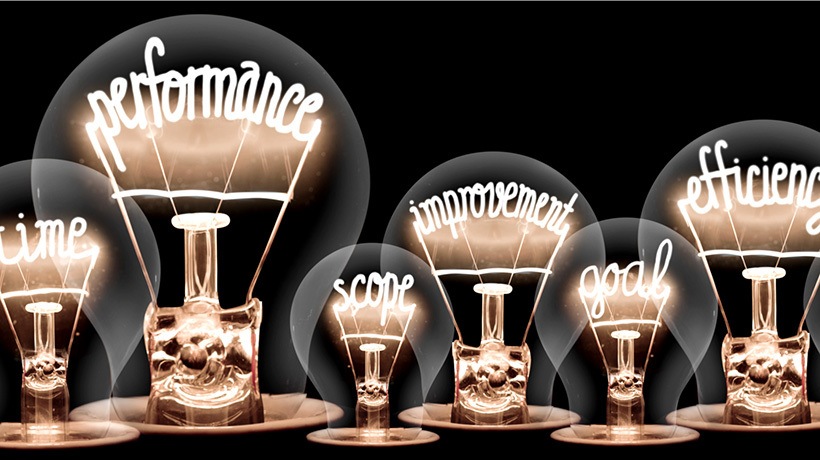How To Turn Your eLearning Platform Into A Total Performance Solution
As more organizations make the switch to online training programs, eLearning has become more dynamic, engaging and comprehensive.
But many of those organizations are often surprised to learn that simply incorporating eLearning isn’t enough. In fact, it’s only just the beginning.
There are 4 core components of performance optimization – compliance and certification, operational readiness, risk management, and efficiency improvement – which, when leveraged in conjunction with eLearning, strengthen an organization’s performance capabilities by taking an eLearning training platform and making it a total performance optimization solution.
Here, we break down each core component.
1. Compliance And Certification
Most companies recognize the importance of compliance-related training but as regulation and compliance become more complex, comprehensive compliance training and certification solutions can help organizations navigate complexities, mitigate risks and ensure that there are no legal issues or penalties.
According to the Department of Health and Human Services (HHS) Office of Inspector General (OIG), “... comprehensive compliance programs should include … the development and implementation of regular, effective education and training programs for all affected employees … [and] the compliance officer’s primary responsibilities should include … developing, coordinating, and participating in a multifaceted educational and training program that focuses on the elements of the compliance program, and seeks to ensure that all appropriate employees and management are knowledgeable of, and comply with, pertinent federal and state standards.”
Where do most companies fall short? Thinking that compliance training is being able to check a box to meet minimum requirements because it is – and should be – so much more than that.
It’s equipping your employees with the skills and training necessary to navigate the complexities of laws and regulations safely and efficiently. It’s being able to rely on a total performance solution that develops and delivers superior training. It’s meeting regulatory and corporate requirements. It’s providing record-keeping and reports on these learning initiatives.
Compliance and certification can
- Sharpen skills and improve performance by improving workforce performance, reducing errors and minimizing risk.
- Increase compliance and reduce risk by training your team to recognize and prevent at-risk conditions and behaviors before an incident can occur.
- Provide documentation and reporting if there's an accident, or a piece of equipment is broken or missing in a place where everyone can access that information.
- Manage facilities and reduce building maintenance costs by improving efficiency and enhancing communication with online courses.
- Manage accreditations to comply with state, federal and professional association compliance requirements.
2. Operational Readiness
In order to be adaptive and responsive to new laws, emergencies, market demands, technologies, and more, operational readiness leverages technology to provide employees and their organizations, real-time data, SDS management, incident and accident reporting, competency assessments, and professional development tracking.
Operational readiness equips employees to perform, take action, and respond to every situation with the proper training, skills, and products necessary to operate at the highest level while reducing injuries and claims.
Operational readiness can
- Manage training with an automated system that allows users to access high-quality courses from one convenient online system.
- Handle scheduling by providing control of scheduling and overtime hiring needs, eliminating conflicts and grievances.
- Facilitate tip reporting to prevent safety incidents before they occur, notifying users immediately of every tip.
- Manage SDS and chemicals through a GHS-compliant system.
- Track incidents by efficiently managing injuries, incidents and accidents with dashboards and administrative reports to aid prevention efforts.
3. Risk Management
The third core component of performance optimization is risk management which provides safety improvements and reduces risks and claims.
And a strong risk management strategy connects accidents, incidents, and near-misses by identifying training deficits and proactively prescribing training assignments in order to mitigate, manage and eliminate risks to improve safety and lower claims.
Not only are risk management solutions bolstered by just-in-time training options, and data organizations need to help everyone do their jobs better, but they also help them stay safe by reducing risk, and ensuring proper safety protocols are followed to keep costs down.
Risk management can
- Automate workflows and reports to investigate and manage injury and accident reports, eliminating paperwork and streamlining management processes.
- Prevent incidents through real-time data by letting users submit and track tips and communciations in real-time, preventing safety incidents before they occur.
- Reduce claims and workers compensation costs with incident-tracking solutions that provide employers incident reports which identify safety issues or accident-prone areas.
4. Efficiency Improvement
The fourth and final core component of optimized performance is efficiency improvement, which reminds us that every second counts.
Efficiency improvement benefits organizations and their employees in countless ways, including reduced asset downtime, improved workflow processes, and savings on manpower, resources, money, and more.
Training programs with a focus on efficiency improvements and solutions allow your employees to efficiently collect, manage, analyze and act upon comprehensive, real-time data for improved workplace efficiency reported directly into your system and assigned.
But what does efficiency improvement look like to different industries?
For commercial industries, such as manufacturing, efficiency improvements reduce asset downtime and improve process and workflow by providing checklists that are easily accessible and provide every step to streamline the process, improve workflow, and reduce risk.
For educational institutions, efficiency improvements can automate teacher and staff evaluations to help districts better organize their professional development and manage growth and performance.
For public service industries, such as fire departments, efficiency improvements provide both employees and employers control of their workforce management and employee scheduling in order to operate more efficiently and respond to shift or scheduling requests in real-time.
Optimized Training, Optimized Results
These 4 core components of optimized performance – certification and compliance, operational readiness, risk management, and efficiency improvements – bolster eLearning and arm organizations with better ways to train staff, renew licenses, sharpen skills, advance careers, stay safe, and work efficiently.
